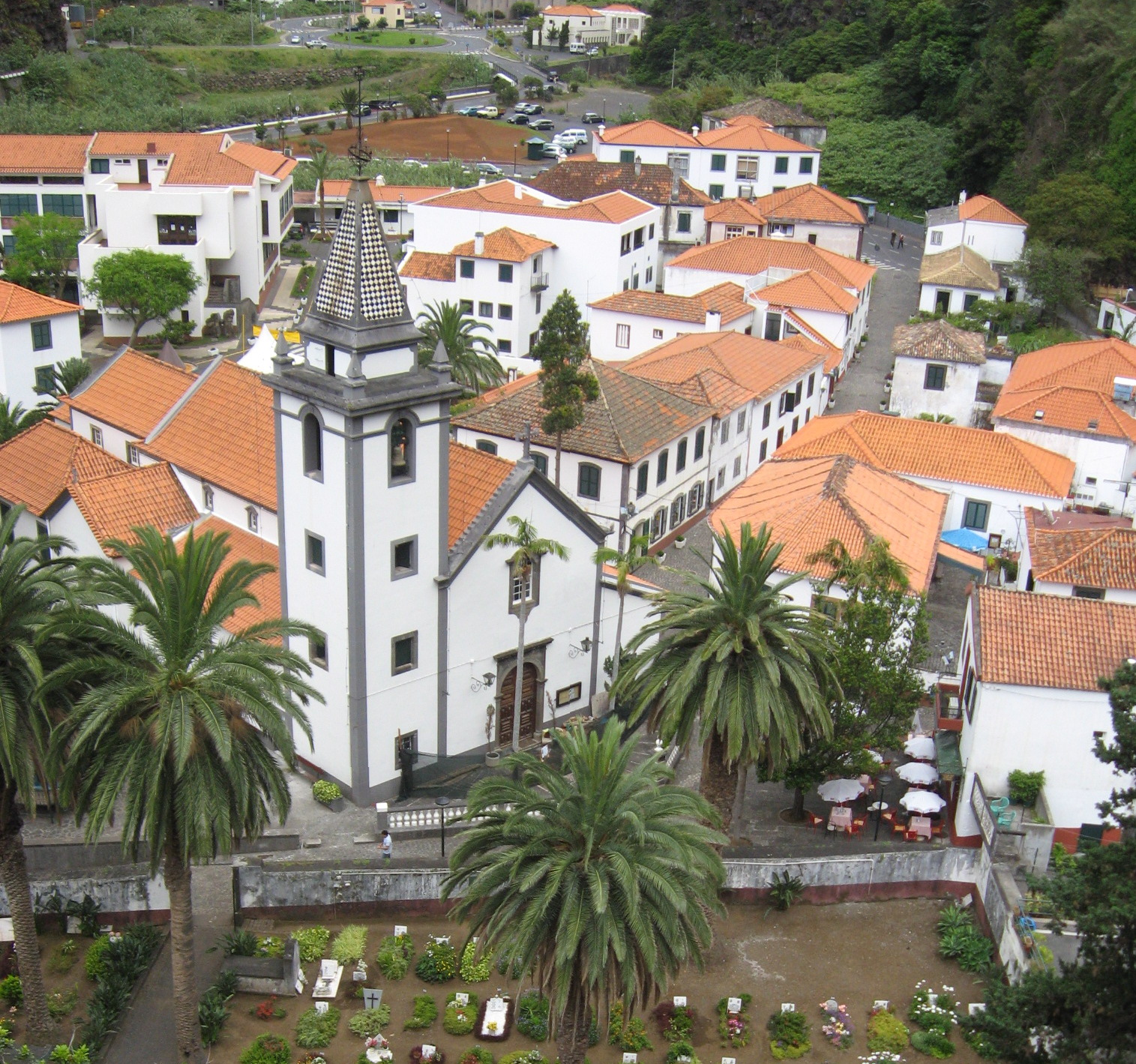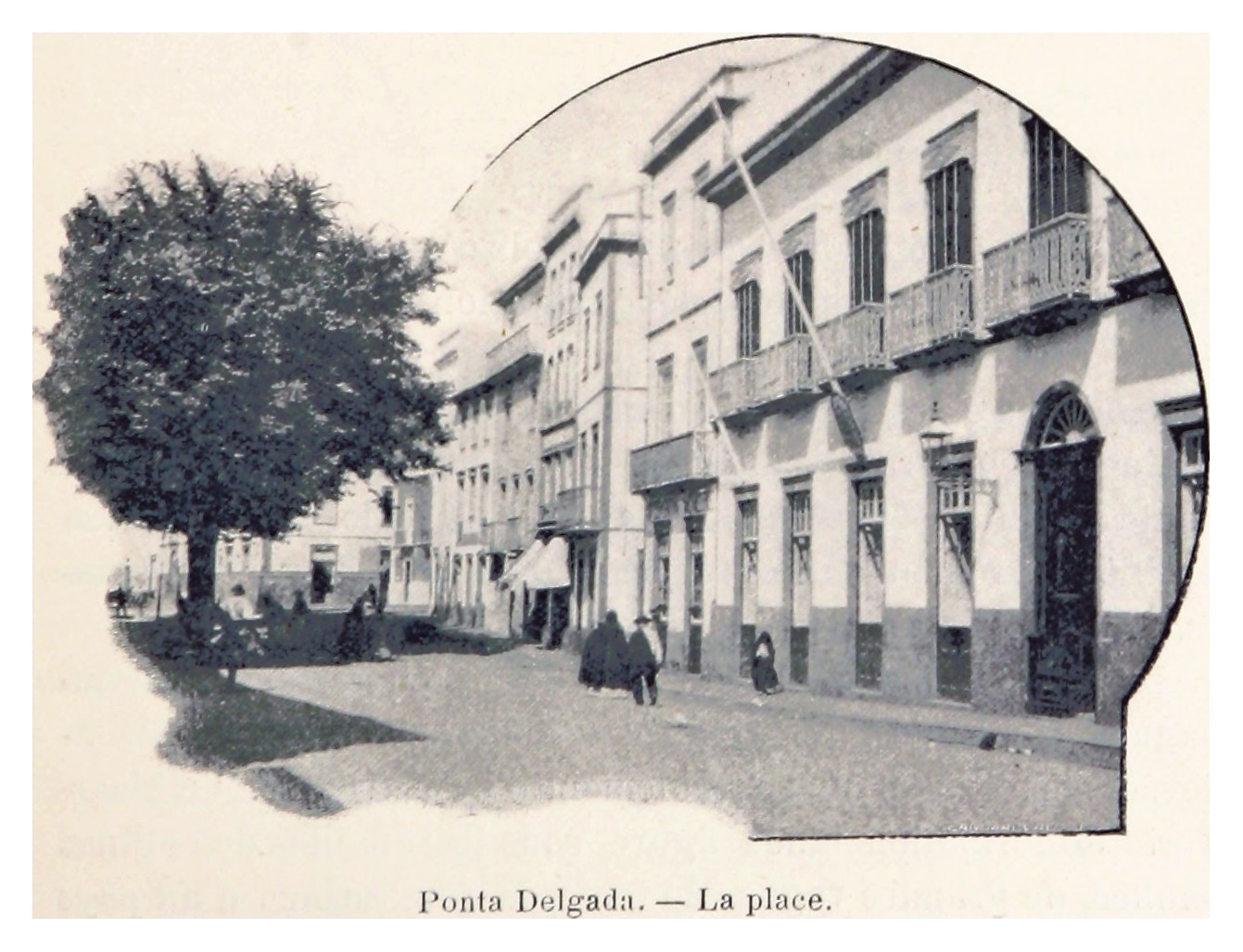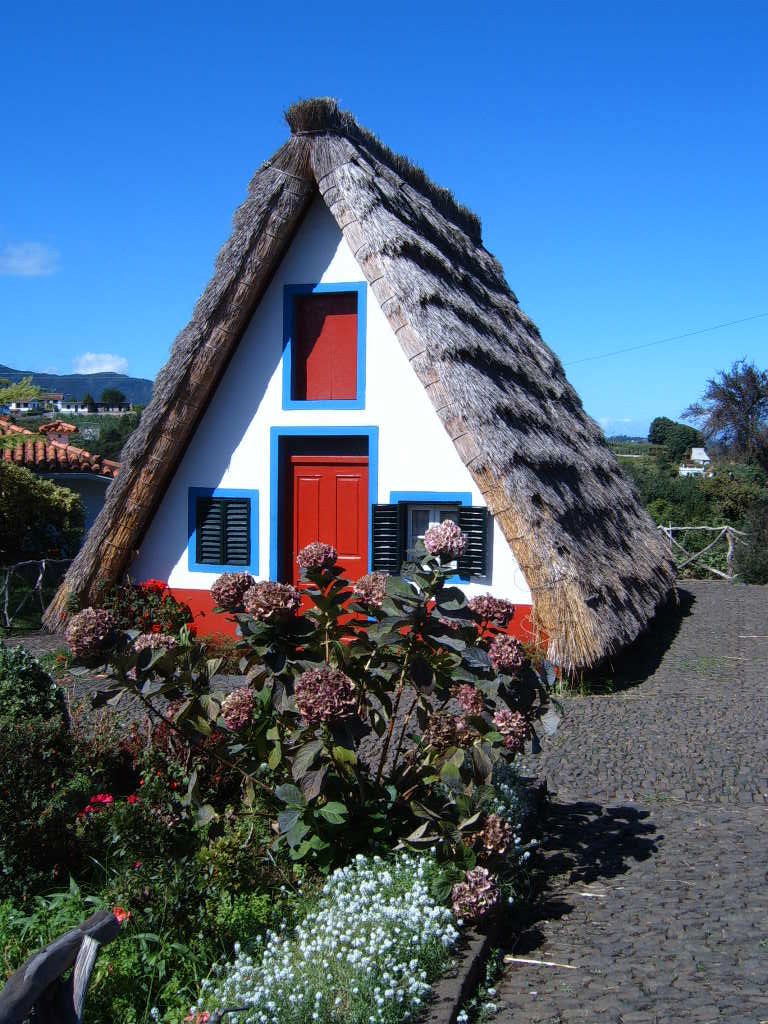|
São Vicente, Madeira
São Vicente () is a municipality along the north-west coast of the island of Madeira. History The first human visitors to São Vicente appeared in the middle of the 15th century, colonizing the area much later than the settlers in the southern part of the island, owing to its fertility. This area of the island, due to its steep escarpments and deep river-valleys made early settlement difficult. The first settlers appeared in the areas of São Vicente and Ponta Delgada, respectively. The progressive growth of its population led to dis-annexation of São Vicente from the Captaincy of Machico, and elevation to municipal seat by royal charter on 23 August 1774. At that time the parishes of Porto Moniz, Seixal, Arco de São Jorge and São Jorge where under the administration of the municipal authority. In 1835, the restructuring of municipal government under the Liberal reformer Mouzinho da Silveira lead to the creation of two new municipalities (Santana and Porto Moniz) along the nor ... [...More Info...] [...Related Items...] OR: [Wikipedia] [Google] [Baidu] |
Madeira Island
Madeira is a Portuguese island, and is the largest and most populous of the Madeira Archipelago. It has an area of , including Ilhéu de Agostinho, Ilhéu de São Lourenço, Ilhéu Mole (northwest). As of 2011, Madeira had a total population of 262,456. The island is the top of a massive submerged shield volcano that rises about from the floor of the Atlantic Ocean. The volcano formed atop an east–west rift in the oceanic crust along the African Plate, beginning during the Miocene epoch over 5 million years ago, continuing into the Pleistocene until about 700,000 years ago. This was followed by extensive erosion, producing two large amphitheatres open to south in the central part of the island. Volcanic activity later resumed, producing scoria cones and lava flows atop the older eroded shield. The most recent volcanic eruptions were on the west-central part of the island only 6,500 years ago, creating more cinder cones and lava flows. Madeira is the largest is ... [...More Info...] [...Related Items...] OR: [Wikipedia] [Google] [Baidu] |
Geography
Geography (from Greek: , ''geographia''. Combination of Greek words ‘Geo’ (The Earth) and ‘Graphien’ (to describe), literally "earth description") is a field of science devoted to the study of the lands, features, inhabitants, and phenomena of Earth. The first recorded use of the word γεωγραφία was as a title of a book by Greek scholar Eratosthenes (276–194 BC). Geography is an all-encompassing discipline that seeks an understanding of Earth and its human and natural complexities—not merely where objects are, but also how they have changed and come to be. While geography is specific to Earth, many concepts can be applied more broadly to other celestial bodies in the field of planetary science. One such concept, the first law of geography, proposed by Waldo Tobler, is "everything is related to everything else, but near things are more related than distant things." Geography has been called "the world discipline" and "the bridge between the human and ... [...More Info...] [...Related Items...] OR: [Wikipedia] [Google] [Baidu] |
Vincent Of Saragossa
Vincent of Saragossa (also known as Vincent Martyr, Vincent of Huesca or Vincent the Deacon), the Protomartyr of Spain, was a deacon of the Roman Catholic Archdiocese of Zaragoza, Church of Saragossa. He is the patron saint of Lisbon and Valencia (city in Spain), Valencia. His feast day is 22 January in the Catholic Church and Anglican Communion and the Eastern Orthodox Church, Orthodox Church, with an additional commemoration on 11 November in the Orthodox Church. He was born at Huesca and martyred under the Emperor Diocletian around the year 304. Biography The earliest account of Vincent's martyrdom is in a ''carmen'' (lyric poem) written by the poet Prudentius, who wrote a series of lyric poems, ''Peristephanon'' ("Crowns of Martyrdom"), on Hispania, Hispanic and Ancient Rome, Roman martyrs. He was born at Huesca, near Saragossa, Spain sometime during the latter part of the 3rd century; it is believed his father was Eutricius (Euthicius), and his mother was Enola, a native ... [...More Info...] [...Related Items...] OR: [Wikipedia] [Google] [Baidu] |
Ponta Delgada (Madeira)
Ponta Delgada (; ) is the largest municipality ('' concelho'') and economic capital of the Autonomous Region of the Azores in Portugal. It is located on São Miguel Island, the largest and most populous in the archipelago. As of 2021, it has 67,287 inhabitants, in an area of . There are 17,629 residents in the three central civil parishes that comprise the historical city: São Pedro, São Sebastião, and São José. Ponta Delgada became the region's administrative capital under the revised constitution of 1976; the judiciary and Catholic See remained in the historical capital of Angra do Heroísmo while the Legislative Assembly of the Azores was established in Horta. History The origin of the placename Ponta Delgada (Portuguese for ''delicate or thin point'') was elaborated by the famous Portuguese chronicler, Father Gaspar Frutuoso, who wrote: In around 1450, Pêro de Teive established a small fishing village that eventually grew into the urban agglomeration in San ... [...More Info...] [...Related Items...] OR: [Wikipedia] [Google] [Baidu] |
Liberal Revolution Of 1820
The Liberal Revolution of 1820 ( pt, Revolução Liberal) was a Portuguese political revolution that erupted in 1820. It began with a military insurrection in the city of Porto, in northern Portugal, that quickly and peacefully spread to the rest of the country. The Revolution resulted in the return in 1821 of the Portuguese Court to Portugal from Brazil, where it had fled during the Peninsular War, and initiated a constitutional period in which the 1822 Constitution was ratified and implemented. The movement's liberal ideas had an important influence on Portuguese society and political organization in the nineteenth century. Historical background From 1807 to 1811 Napoleonic French forces invaded Portugal three times. As a result, the Portuguese royal family was transferred to the Portuguese colony of Brazil, where it remained until 1821. From Brazil, the Portuguese king João VI ruled his transcontinental empire for thirteen years. Following the defeat of the French forces ... [...More Info...] [...Related Items...] OR: [Wikipedia] [Google] [Baidu] |
Mouzinho Da Silveira
José Xavier Mouzinho da Silveira (12 July 1780 in Castelo de Vide – 4 April 1849 in Lisbon) was a Portuguese statesman, jurist and politician, as well as one of the most important personalities of the Liberal Revolution of 1820, responsible for legislation and administrative reforms that shaped Portuguese institutions, taxation and justice in the period after the Constitutional Charter. Imprisoned after the Abrilada, he became one of the most uncompromising defenders of the Charter, remaining in exile for several years after 1828, and only returning in 1834 to defend his legislative agenda, exiling himself once again in 1836. In the final ten years of his life, Mouzinho da Silveira retired from public life, before his untimely death. Early life Mouzinho da Silveira was born on 12 July 1780, in Castelo de Vide, son of a wealthy rural property-owner. After learning arithmetic, Latin and Greek, he departed for Porto in October 1796, where he remained until June of the following ye ... [...More Info...] [...Related Items...] OR: [Wikipedia] [Google] [Baidu] |
St Vicente
ST, St, or St. may refer to: Arts and entertainment * Stanza, in poetry * Suicidal Tendencies, an American heavy metal/hardcore punk band * Star Trek, a science-fiction media franchise * Summa Theologica, a compendium of Catholic philosophy and theology by St. Thomas Aquinas * St or St., abbreviation of "State", especially in the name of a college or university Businesses and organizations Transportation * Germania (airline) (IATA airline designator ST) * Maharashtra State Road Transport Corporation, abbreviated as State Transport * Sound Transit, Central Puget Sound Regional Transit Authority, Washington state, US * Springfield Terminal Railway (Vermont) (railroad reporting mark ST) * Suffolk County Transit, or Suffolk Transit, the bus system serving Suffolk County, New York Other businesses and organizations * Statstjänstemannaförbundet, or Swedish Union of Civil Servants, a trade union * The Secret Team, an alleged covert alliance between the CIA and American indus ... [...More Info...] [...Related Items...] OR: [Wikipedia] [Google] [Baidu] |
Santana, Madeira Islands
Santana (), short form for ''Santa Ana'' (meaning Saint Anne) is a municipality along the northern coast of the island of Madeira, in the Portuguese archipelago of the same name. The population in 2011 was 7,719, in an area of . Geography Santana includes six parishes, within a rugged mountainous environment, most occupying river-valleys: * Arco de São Jorge * Faial * Ilha * Santana - the parish (and town) has a population of 3,275 (in 2011), in an area of 19.01 km² * São Jorge * São Roque do Faial Santana parish has the largest number residents, while Arco de São Jorge is both the smallest, physically, and has the lowest number of residents,Santana and Arco de São Jorge are also located in the higher altitudes in the municipality. while Faial is the largest parish. Santana is known for the traditional homes constructed with sloping triangular rooftops, and protected with straw. These were mainly rural homes, used by local farmers, during the settlement of the ... [...More Info...] [...Related Items...] OR: [Wikipedia] [Google] [Baidu] |
Machico
Machico () is a municipality, parish and city in the southeast part of the island of Madeira, in the Autonomous Region of Madeira. The easternmost municipality on the island, it is also the third-most populous area with a population of 21,828 in 2011. The town, proper, had a population of 10,894 in 2001. History In calm waters of early after, on 1 July 1419, João Gonçalves Zarco and Tristão Vaz Teixeira disembarked on the beach of Machico, beginning the era of Portuguese discoveries. On the beach a Mass of thanksgiving was celebrated by Franciscan priests on the feast of the Visitation (2 June), an image of which accompanied the expedition. Many hypotheses have developed as to the origin of the name of the municipality. The most remembered, and not the least disputed, comes from the romanticized legend of the English lovers Robert Machim and Anne d'Arfet. As the legend explains, the two lovers escaped from England (where their love was forbidden and condemned by the Churc ... [...More Info...] [...Related Items...] OR: [Wikipedia] [Google] [Baidu] |
São Vicente Caves
The São Vicente Caves (Grutas de São Vicente in Portuguese) are caves located in the parish and county of São Vicente, Madeira. Entrance is charged at €8 for adults, but have been closed since March 2020. History These caves were formed around 890,000 years ago from a volcanic eruption in Paul da Serra that ran down to the sea. Thus, the outside, exposed to lower temperatures solidified rapidly while the inner liquid continued to run with many gases, forming a series of lava tubes, which today constitute the caves of São Vicente. They were first discovered in 1885, by local people who informed James Yate Johnson an English naturalist in Madeira who explored the caves further. The caves were opened to the public on 1 of October 1996, being one of the first caves of volcanic origins to be opened to the public in Portugal. See also *Furnas do Cavalum The Furnas do Cavalum (Caves of Cavalum in English) are a group of four caves located in Machico Machico () is a muni ... [...More Info...] [...Related Items...] OR: [Wikipedia] [Google] [Baidu] |
Ponta Delgada (São Vicente)
Ponta Delgada (; ) is the largest municipality ('' concelho'') and economic capital of the Autonomous Region of the Azores in Portugal. It is located on São Miguel Island, the largest and most populous in the archipelago. As of 2021, it has 67,287 inhabitants, in an area of . There are 17,629 residents in the three central civil parishes that comprise the historical city: São Pedro, São Sebastião, and São José. Ponta Delgada became the region's administrative capital under the revised constitution of 1976; the judiciary and Catholic See remained in the historical capital of Angra do Heroísmo while the Legislative Assembly of the Azores was established in Horta. History The origin of the placename Ponta Delgada (Portuguese for ''delicate or thin point'') was elaborated by the famous Portuguese chronicler, Father Gaspar Frutuoso, who wrote: In around 1450, Pêro de Teive established a small fishing village that eventually grew into the urban agglomeration in San ... [...More Info...] [...Related Items...] OR: [Wikipedia] [Google] [Baidu] |

.jpg)




